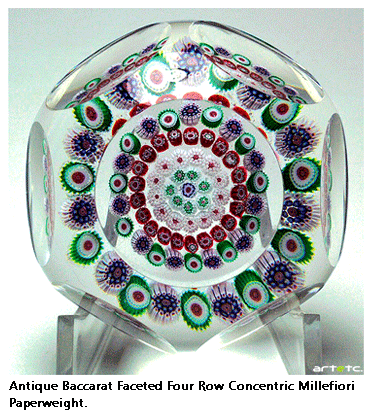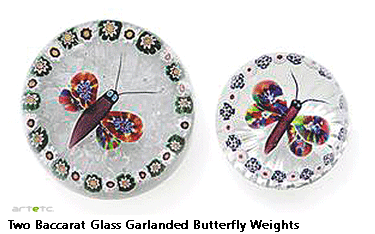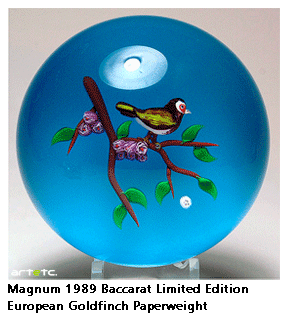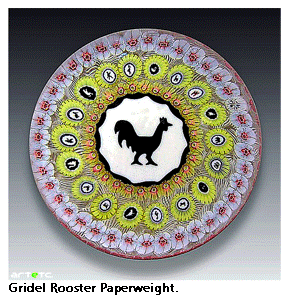- Publisher's Note
- Editorial
- Jogen Chowdhury: Maestro par Excellence
- Company School Paintings of Calcutta, Murshidabad, Patna (1750-1850): Doctoral Thesis of Late Dipak Bhattacharya (1960-2007)
- Kalighat Pat, a Protomodern Art Tradition?
- Academic Naturalism in Art of Bengal: The First Phase of Modernity
- Under the Banyan Tree - The Woodcut Prints of 19th Century Calcutta
- The Arabian Nights and the Web of Stories
- Gaganendranath Tagore's Satirical Drawings and Caricatures
- Gaganendranath's Moments with Cubism: Anxiety of Influence
- Abanindranath as Teacher: Many Moods, Some Recollections
- Atul Bose: A Short Evaluation
- J.P. Gangooly: Landscapes on Canvas
- Defined by Absence: Hemen Majumdar's Women
- Indra Dugar: A Profile of a Painter
- The Discreet Charm of Fluid Lines!
- Delightful Dots and Dazzling Environments: Kusama's Obsessive Neurosis
- Peaceful be Your Return O Lovely Bird, from Warm Lands Back to My Window
- Shunya: A Beginning from a Point of Neutrality
- The Tagore Phenomenon, Revisited
- The Bowl, Flat and Dynamic Architecture of the BMW Museum
- Baccarat Paperweights: Handmade to Perfection
- Byzantium and Islam: Age of Transition at the Metropolitan Museum of Art
- Outstanding Egyptian Art at the Metropolitan Museum of Art
- Retrospective of Wu Guanzhong at the Asia Society Museum
- Masterpieces from India's Late Mughal Period at the Asia Society Museum
- The Dhaka Art Summit: Emergence of Experimental Art Forms
- Many Moods of Eberhard Havekost
- Random Strokes
- Is it Putin or the Whole Russian State?
- The Onus Lies With Young India
- What Happened and What's Forthcoming
- Preview May, 2012 – June, 2012
- In the News, May 2012
- Art Events Kolkata, April – May 2012
- Mumbai Art Sighting
- Delhi Dias
- Art Bengaluru
- Musings from Chennai
- Cover
ART news & views
Baccarat Paperweights: Handmade to Perfection
Issue No: 29 Month: 6 Year: 2012
by Anurima Sen
The evolution of glass paperweights beyond exclusively utilitarian objects occurred during the mid-19th century when a niche industry emerged in France, transforming these everyday objects into desirable works of art. Inspired by Italian glass workers in Murano, French glass factories began to explore new techniques in the 1840s. Their experimental work produced striking decorative motifs, all encased in glass spheres that magnified the intricate detail of the pieces. The popularity of these objects grew exponentially during the late 1840's, and examples from this period are among the most highly valued by collectors.
-From Artfact, LLC
The La Compagnie des Cristalleries Baccarat is situated at Baccarat in Lorraine, and was founded in the year 1764. It became France's major glass-making company by the year 1822. Louis XVIII became a patron of Baccarat and played a very active role in the promotion of the glass arts. Since then, the name of the factory has been synonymous with quality products. It always had a large manufacturing potential, and excelled in various fields related to glass-making, such as, blowing, molding, pressing, cutting, etching, engraving, application, millefiori, overlay, sulfides and so on.
Gabriel d'Artigues, the owner and director of Baccarat, was a notable and gifted glass artisan. Under his guidance the factory produced everything from lighting fixtures to inkwells and paperweights. Paperweights were of course one of their most famous products. Some of the finest antique paperweights can be traced back to the Baccarat factory. Baccarat became famous for making lead crystal paperweights based on the Italian millefiori pattern ('millefiori' can be loosely translated as 'a thousand flowers').
 The millefiori technique drew inspiration from the mosaic bead patterns that can be dated back to ancient Rome. These patterns were imitated in the form of glass canes which were cut across to reveal colourful smaller beads. These beads were next formed into patterns which were then fused to a crystal globe. By 1846, Baccarat perfected the design of millefiori paperweights, often incorporating animal silhouette canes and making perimeter borders of canes around a central flower, fruit, or animal design in the crystal paperweight. Canes were present in both floral and star shapes, but Baccarat also came up with the 'silhouette cane'. This referred to a silhouette of a person or an animal that appeared in the center of the cane. Many paperweights had a combination of floral, star-shaped and silhouette canes. Silhouette canes came handy in outlining the central design of the paperweight, whether it was a flower or piece of fruit. Arrows were also another common cane design in the paperweights and came in many different colours. These are the main trademark patterns frequently found in Baccarat millefiori paperweights; collectors who are looking for genuine pieces should at all times look for these small details! An interesting fact is that for a short period following the eighteenth century, Baccarat decreased production of these paperweights. The manufacture was revived in 1953, but by then they were already on their way to becoming highly sought-after collectibles.
The millefiori technique drew inspiration from the mosaic bead patterns that can be dated back to ancient Rome. These patterns were imitated in the form of glass canes which were cut across to reveal colourful smaller beads. These beads were next formed into patterns which were then fused to a crystal globe. By 1846, Baccarat perfected the design of millefiori paperweights, often incorporating animal silhouette canes and making perimeter borders of canes around a central flower, fruit, or animal design in the crystal paperweight. Canes were present in both floral and star shapes, but Baccarat also came up with the 'silhouette cane'. This referred to a silhouette of a person or an animal that appeared in the center of the cane. Many paperweights had a combination of floral, star-shaped and silhouette canes. Silhouette canes came handy in outlining the central design of the paperweight, whether it was a flower or piece of fruit. Arrows were also another common cane design in the paperweights and came in many different colours. These are the main trademark patterns frequently found in Baccarat millefiori paperweights; collectors who are looking for genuine pieces should at all times look for these small details! An interesting fact is that for a short period following the eighteenth century, Baccarat decreased production of these paperweights. The manufacture was revived in 1953, but by then they were already on their way to becoming highly sought-after collectibles.

Like most Italian paperweights, close-knit concentric circles were made from the canes to form a plethora of designs in the Baccarat paperweights. Instead of being a globe-shaped paperweight, a millefiori Baccarat paperweight can be completely faceted.
 Baccarat paperweights exist in the magnum size (4” in diameter), the regular size (3” in diameter), and the miniature size (2” in diameter). While the regular sized paperweights are very rare, the miniatures are fairly uncommon. The subjects of these paperweights ranged from all kinds of flora and fauna to men and women of note. The trend of incorporating a riot of colours in opaline glass started in around 1810, and remained highly popular even in the 1860s. Colours such as apple green, blue, mauve, yellow, turquoise, violet, pink and black were used commonly. Overlay paperweights too rapidly gained popularity from 1870 onwards. Overlay paperweights had a coating, or multiple coatings, of coloured glass. The colours used were usually red, blue and green.
Baccarat paperweights exist in the magnum size (4” in diameter), the regular size (3” in diameter), and the miniature size (2” in diameter). While the regular sized paperweights are very rare, the miniatures are fairly uncommon. The subjects of these paperweights ranged from all kinds of flora and fauna to men and women of note. The trend of incorporating a riot of colours in opaline glass started in around 1810, and remained highly popular even in the 1860s. Colours such as apple green, blue, mauve, yellow, turquoise, violet, pink and black were used commonly. Overlay paperweights too rapidly gained popularity from 1870 onwards. Overlay paperweights had a coating, or multiple coatings, of coloured glass. The colours used were usually red, blue and green.
We have by now gained a working knowledge of the basic features of the Baccarat paperweight. It is time to move on to the study of those rare paperweights that have become coveted collectibles for collectors all over the world. Most collectors refer to three periods of the Baccarat paperweight: the Classic period (1845-1860), the Dupont period (1900-1934) and the Modern period (1953- ). Naturally, the greatest demand is for paperweights that hail from the first two periods mentioned.
The most famous of these paperweights is perhaps the L'Eglise Baccarat of 1853. This paperweight was originally set in the foundation of the Baccarat Church. The church was bombed during the Second World War, yet, miraculously, the paperweight remained intact. The canes are intricately flower-patterned and are packed at the base of the piece.
Another rare 1848 millefiori paperweight contains a wide variety of subjects, packed inside its miniature size. The canes have flowers and stars, while the silhouette canes bear the date of manufacture in the form of a pattern. Other silhouette canes are in the form of a dog, pelican, deer and rooster.
One type of paperweight from the circa 1845-1860 consists of multi-coloured millefiori segments. This paperweight is commonly called the Baccarat Macédoine. The rare Macédoine style is one in which short sections of latticinio are arranged in a quilt-like pattern with many of the sections set at right angles to each other. Another type of weights, from circa 1880, is called the Baccarat Rock paperweight. This paperweight contains a sandy ground consisting of green glass particles and mica. Some of these weights contain representations of reptiles and flowers along with the predominant rock motif. The Baccarat Pansy paperweight with leaves and stem, from circa 1900 has a star cut on the base. The flower itself consists of two large velvet petals situated above three petals at the base. The petals are of an amber hue with a white base, and the tips are distinctly purple. The whorl at the center is of a beautiful red.
The Gridel series of eighteen limited edition paperweights was made during 1971-1979. The first two paperweights in the series, the rooster and the squirrel, have miniature versions of all eighteen silhouette canes surrounding a central Gridel cane and were each made in a limited edition of twelve hundred. The others in this series, have small versions of only seventeen other silhouette canes surrounding the large central one and were made in a smaller limited edition of less than three hundred and fifty. These paperweights are very rare.


At Christie's, two Baccarat glass-garlanded butterfly weights from the mid-nineteenth century fetched a price of $5,625 in 2010. The lot description reads: Each set with an insect composed of a translucent purple gauze body, black antennae and head, pale-blue eyes and multi-coloured marbleized wings, within a garland of millefiori canes at the periphery, the first hovering above an upset muslin ground; the second with a star-cut base.
Another glass 'thousand petaled rose' paperweight from the mid 19th C was sold at a price of $3,000. It had a flower composed of numerous shaded red recessed petals growing from a green stalk. A price of $5,250 was realised at the same auction by a signed Baccarat weight, a millefiori weight and a mushroom weight. The lot description on Christie's website reads: The first signed and dated on a single cane 'B 1848'


The spaced weight set with brightly coloured canes including silhouettes of a horse, deer, dog, pheasant, squirrel, pelican, flower, swan, goat and cockerel set amongst short lengths of latticinio tubing and coloured ribbon; the mushroom weight with a tuft formed of tightly-packed multi-coloured canes, including a shamrock cane, within a torsade of hollow white latticinio tubing entwined with cobalt-blue thread edged by mercury bands, star-cut base.
The price of 19th C Baccarat paperweights varies, depending on the rarity of the design and the condition of the paperweight. Provided there are minimal air bubbles in the hand-blown glass, with no nicks, scratches or chips in the glass surface, these paperweights can fetch up to five thousand dollars and more. Artifacts from 1847-1850 will surely fetch anything from $3,000 to $4,000.
There is a reason why the Classic period is deemed most important by avid collectors. It is during these years that the status of the paperweight rose from being a merely functional item to an artifact. It became an object of aesthetic value, and was hailed as a decorative item without which no desk was complete. Baccarat played a very important role in bringing about this transition with the production of perfect, handmade and unique paperweights.